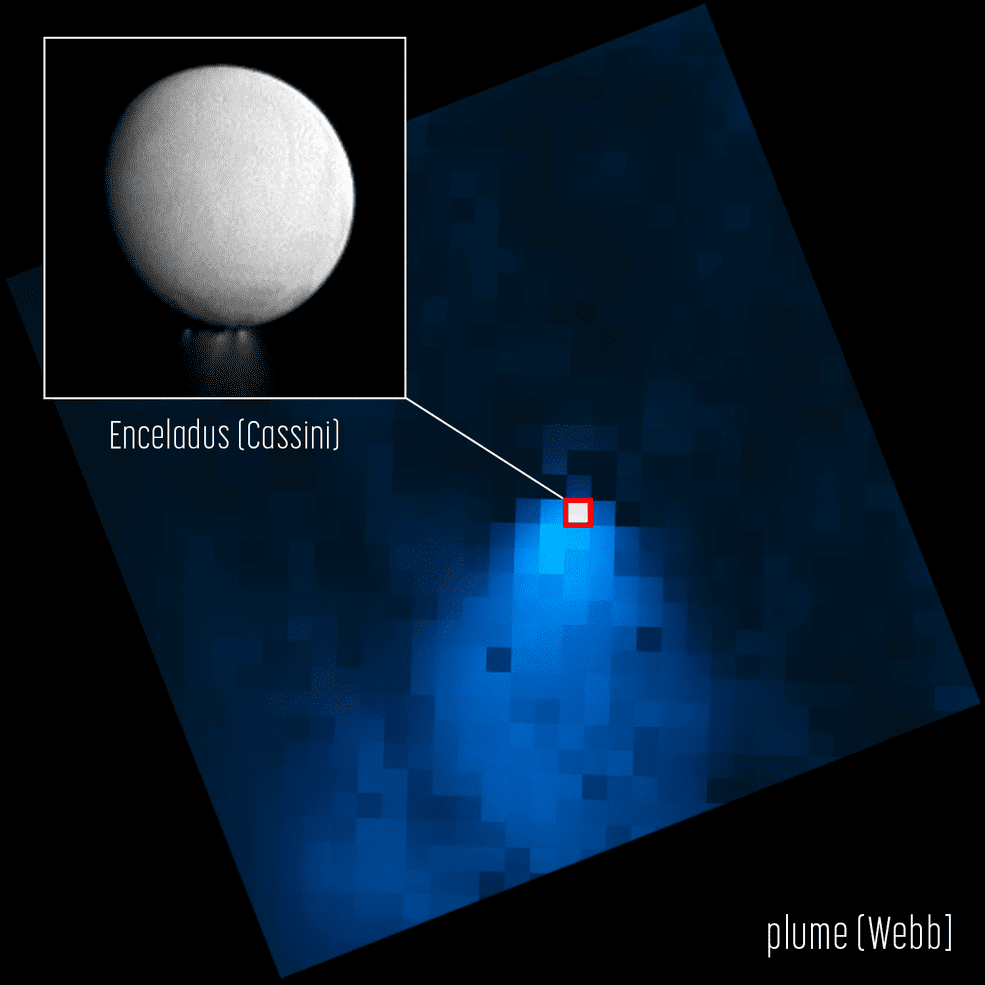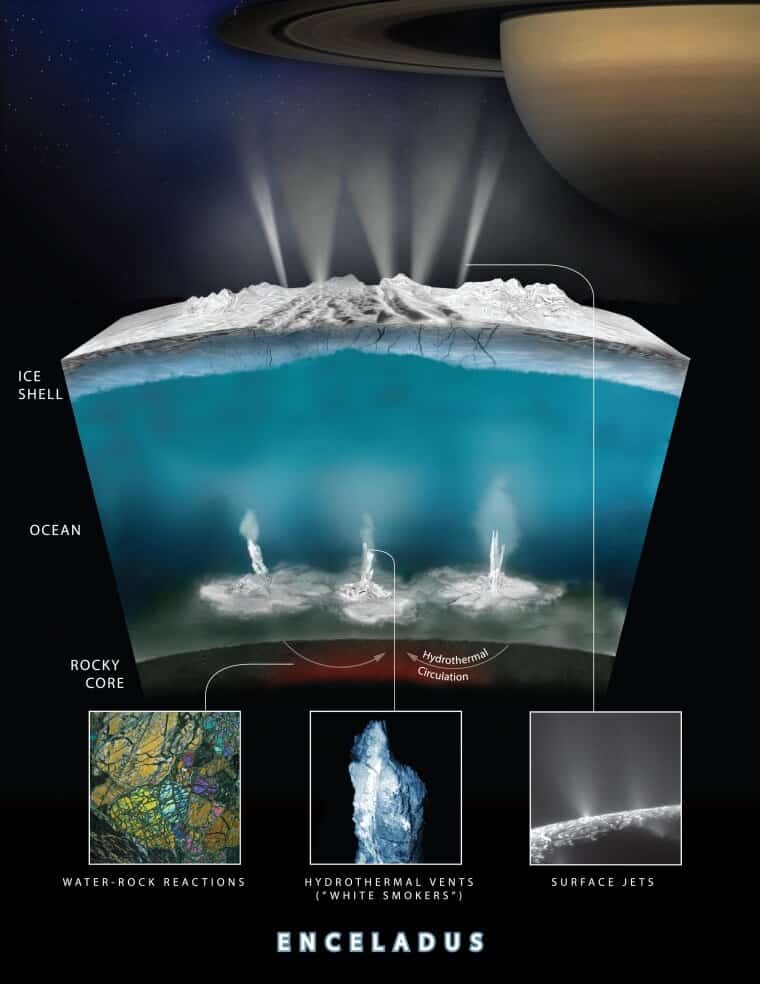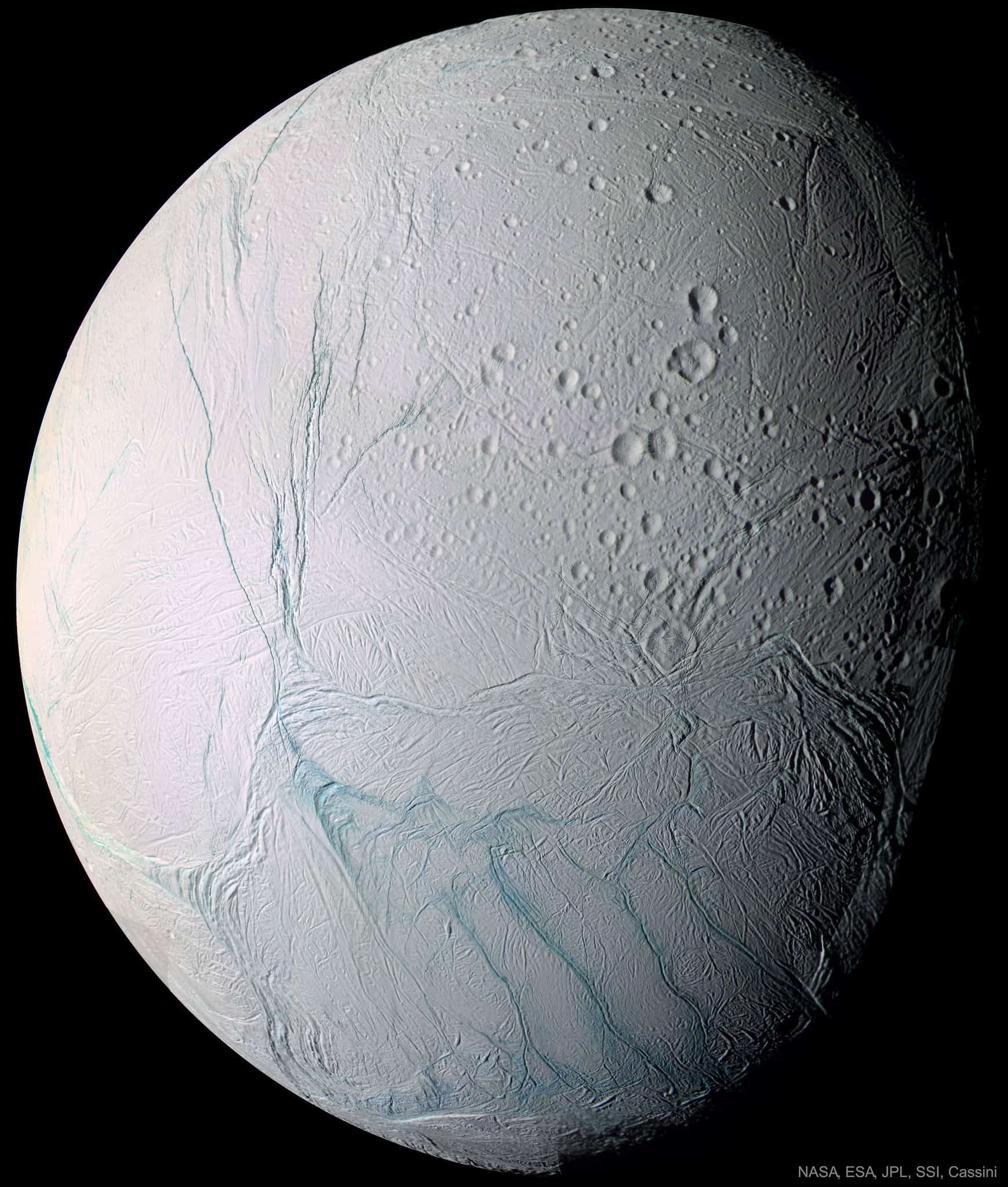Enceladus is one of the most intriguing bodies in our solar system. Under its icy crust, the moon hosts an ocean of salty water, which makes it potentially well-suited for hosting life. But that’s not all that’s interesting about Enceladus. Apparently, the moon also spurts out some of this water. As the James Webb telescope highlights, it spurts out a lot of water.

Water and ice
When lead author Geronimo Villanueva of NASA’s Goddard Space Flight Center in Greenbelt looked at the data, he thought it had to be wrong. How could a moon eject a water plume so big? “The water plume extends far beyond its release region at the southern pole,” says Villanueva.
The length of the plume goes out 20 times beyond the diameter of the moon. The rate of water flow is also impressive. At 79 gallons per second (about 299 liters per second), the water flows strong enough to fill an Olympic-sized swimming pool in a couple of hours. For comparison, it would take a good hose around two weeks to do the same.
We already know, from the Cassini mission, that flew by Saturn, that Enceladus can spurt out water. Cassini even took samples from one of these plumes. In order to do this, the planet must have a liquid ocean under its frozen surface — somewhat similar to how the Earth has a mantle under its crust.

This water is particularly intriguing from the perspective of extraterrestrial life. Enceladus has become one of the unlikely candidates to host alien life in our solar system, which is also why researchers are so keen to explore it more.
Thankfully, Webb offers tools to do just that.
A water donut
The James Webb Space Telescope (JWST) offers us unprecedented opportunities to study the deep universe. But it’s also good at studying our own cosmic backyard. In this case, the telescope showed not only how big the water plume is, but also where it goes.
“The orbit of Enceladus around Saturn is relatively quick, just 33 hours. As it whips around Saturn, the moon and its jets are basically spitting out water, leaving a halo, almost like a donut, in its wake,” said Villanueva. “In the Webb observations, not only was the plume huge, but there was just water absolutely everywhere.”

The donut shape is technically called a torus, and it’s located around Saturn’s outermost ring, also called the “E-ring.” The Webb observations show how the moon’s water vapor plumes feed the torus. As it turns out, 30% of the water stays in the torus, while the rest of the 70% goes to other parts of the Saturnian system. Before Webb, we couldn’t have really known this.
“Right now, Webb provides a unique way to directly measure how water evolves and changes over time across Enceladus’ immense plume, and as we see here, we will even make new discoveries and learn more about the composition of the underlying ocean,” added co-author Stefanie Milam at NASA Goddard. “Because of Webb’s wavelength coverage and sensitivity, and what we’ve learned from previous missions, we have an entire new window of opportunity in front of us.”

To make matters even more impressive, this is all just a proof of concept. This is only meant to show how the telescope can work.
It’s not bad for a test run.
“This program was essentially a proof of concept after many years of developing the observatory, and it’s just thrilling that all this science has already come out of quite a short amount of observation time,” said Heidi Hammel of the Association of Universities for Research in Astronomy, Webb interdisciplinary scientist and leader of the GTO program.
Enceladus, with its fascinating ocean beneath an icy crust and its massive water plumes, has secured its place as one of the most intriguing bodies in our solar system. With the JWST’s new abilities, we can observe bodies like Enceladus in unprecedented detail. This is only the beginning of a new era of space exploration.
The team’s results were recently accepted for publication in Nature Astronomy on May 17, and a pre-print is available here.






